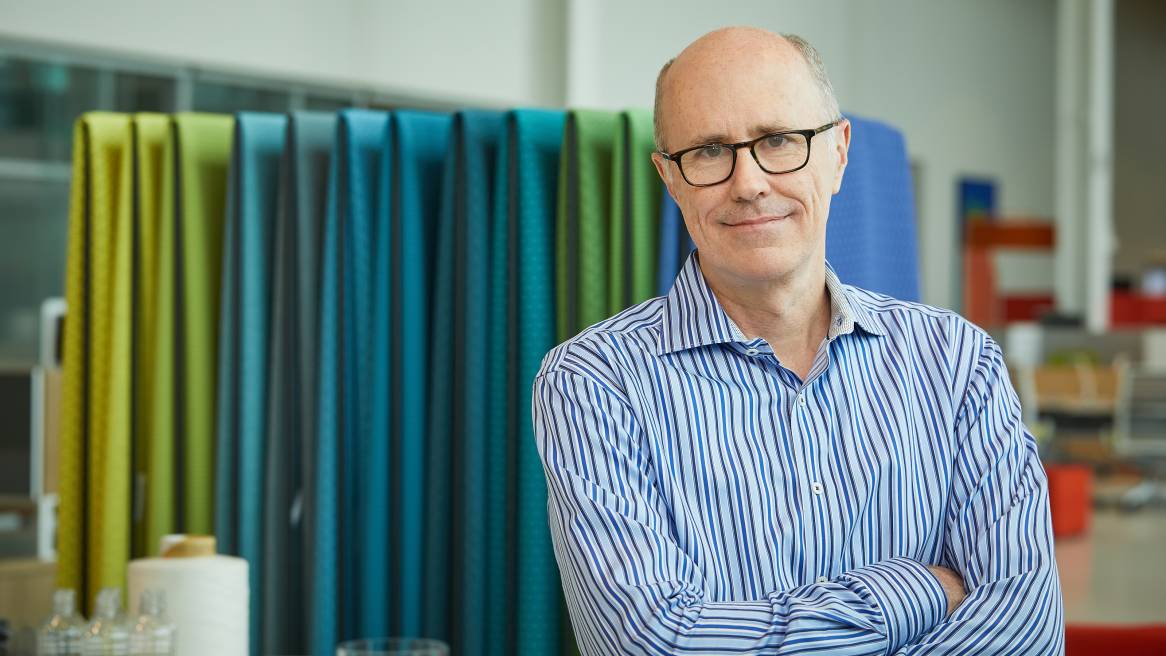Jim Keane on the Future of Work with Microsoft
We recognized the customers we served were facing the same hurdles around innovation and creativity.
Jim Keane is former President and CEO of Steelcase, a 105-year old company committed to creating places that unlock human promise for the world’s leading organizations. In his 20 years with the company, Jim has worked in various roles including COO and CFO. Jim currently serves on several boards ranging from IDEO to Design Futures Council. He is passionate about listening to and interacting with customers, and building an inclusive workplace culture that moves people from words to actions.
Growth and innovation are top of mind issues when I speak with business leaders around the world. One of those conversations included Microsoft’s CEO, Satya Nadella. Three years ago, we were both new to our roles and facing a similar challenge: shifting priorities from efficiency to growth. This kind of change not only requires a reallocation of resources — it necessitates a change in culture and a new way of leading. At my first meeting with our management, I quoted Satya challenging Microsoft to recognize innovation and foster its growth. I thought his words reflected a unique perspective on the emergent nature of true innovation and the evolving role of leadership to fuel creativity.
When Satya and I later talked, we recognized the customers we served were facing the same hurdles around innovation and creativity. So, we asked our teams to think about how our companies could work together to be more helpful to those facing this challenge.
Explore Creative Spaces and the Microsoft and Steelcase partnership.
The global partnership we announced today led to Creative Spaces, a range of integrated environments intended to host the hard work of innovation. This is important because we know creativity in business is not limited to designers or product development — it extends to include business model and experience design, as well as navigating post-merger integrations. While some may picture creative work as a series of sticky-note brainstorming exercises, serious creative work involves frequent transitions from divergent to convergent thinking. People move from large collaborative groups to individual focused time and dyadic work. This dynamic process requires technologies and workplaces designed to support people as they move from one state to the next with devices that are both mobile and integrated into the environment.
For the past several weeks, I’ve been working exclusively with Microsoft’s latest technologies, and have engaged my team in prototyping spaces that feature Surface Hub and Surface Studio, among others. As a user, this immersive approach allowed me to see how everything began to work together — architecture, furniture and technology — and made it easier for me to imagine, share and execute new ideas. This process has given the design team the opportunity to consider my feedback as well as additional input from visiting customers, architects and designers as they collaborated with the Microsoft team.
I’m delighted that by working together and leveraging new insights, Steelcase and Microsoft can begin to help customers unleash creativity and enable a new level of productivity and competitiveness.
 Jim Keane is former President and CEO of Steelcase, a 105-year old company committed to creating places that unlock human promise for the world’s leading organizations. In his 20 years with the company, Jim has worked in various roles including COO and CFO. Jim currently serves on several boards ranging from IDEO to Design Futures Council. He is passionate about listening to and interacting with customers, and building an inclusive workplace culture that moves people from words to actions.
Jim Keane is former President and CEO of Steelcase, a 105-year old company committed to creating places that unlock human promise for the world’s leading organizations. In his 20 years with the company, Jim has worked in various roles including COO and CFO. Jim currently serves on several boards ranging from IDEO to Design Futures Council. He is passionate about listening to and interacting with customers, and building an inclusive workplace culture that moves people from words to actions.


